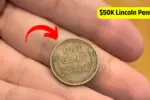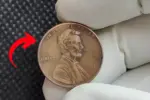The world of coin collecting is full of surprises. What may seem like an ordinary piece of change in your pocket could potentially hold immense value. The Mercury dime, a coin minted from 1916 to 1945, is one such numismatic treasure. Recently, a specific Mercury dime set a staggering record, selling for $7.3 million at an auction. This extraordinary event has sparked curiosity: could coins of such value still be lurking in circulation today? Let’s take a closer look.
A Brief History of the Mercury Dime
The Mercury dime, officially known as the Winged Liberty Head dime, was designed by Adolph A. Weinman in 1916. While its official name references Liberty, the portrait on the coin resembles the Roman god Mercury, giving it its colloquial name. These coins were minted in 90% silver and 10% copper, making them not only valuable for collectors but also as a representation of early 20th-century American history.
The design features Lady Liberty wearing a winged cap, symbolizing freedom of thought, on the obverse side. On the reverse side, there’s a fasces (a bundle of rods) and an olive branch, representing strength and peace. The Mercury dime was a staple of U.S. currency until it was replaced by the Roosevelt dime in 1946.
The $7.3 Million Mercury Dime: What Makes It Unique?
The Mercury dime that fetched $7.3 million is no ordinary coin. This particular specimen is a 1916-D (minted in Denver), part of the extremely rare 10-cent piece category. What makes it unique is its exceptional grade, rarity, and historical significance.
Key Factors Behind Its Value:
- Condition (Grade): Coins are graded on a scale from 1 to 70, with higher grades representing coins in better condition. This record-breaking Mercury dime achieved a grade that was close to perfection, making it exceedingly rare.
- Mint Location: Certain mint marks, such as “D” for Denver or “S” for San Francisco, are known to be more valuable due to smaller mintages. In this case, the “D” mint mark added to the rarity.
- Low Mintage: Specific years saw a much lower production of Mercury dimes, and coins from those years are highly sought after by collectors.
- Historical Provenance: Coins with a well-documented history or belonging to significant collections often fetch higher prices.
Could Valuable Mercury Dimes Still Be in Circulation?
The short answer is, yes, it’s possible but highly unlikely. While Mercury dimes are no longer being produced, millions of them were minted during their three-decade run. Many of these coins are still in existence, though most are now in the hands of collectors, museums, or buried in family coin collections. Here are some scenarios where valuable Mercury dimes might still be found:
1. Loose Change and Coin Rolls
Although rare, it’s possible to stumble upon Mercury dimes in rolls of coins from banks or even in loose change. Coin roll hunting purchasing rolls of coins from banks and searching through them for treasures remains a popular hobby for collectors hoping to uncover something special.
2. Estate Sales and Flea Markets
Many people inherit coin collections without fully understanding their value. Coins like the Mercury dime might end up in estate sales, flea markets, or garage sales, often sold for far less than their actual worth.
3. Old Storage Spaces
Coins often find their way into jars, drawers, or forgotten boxes. A carefully preserved Mercury dime tucked away for decades could emerge as a valuable find.
How to Identify a Rare Mercury Dime
If you happen to find a Mercury dime, determining its value is essential. Here’s how to identify whether you might have a treasure:
1. Check the Date and Mint Mark
Pay special attention to dimes minted in 1916, 1921, and 1945, as these are some of the most sought-after years. The mint mark found on the reverse side near the fasces can also significantly impact value. “D” (Denver) and “S” (San Francisco) are generally rarer than no mint mark (Philadelphia).
2. Evaluate the Condition
The coin’s condition plays a critical role in determining its value. Coins with minimal wear, sharp details, and intact luster are more valuable than worn pieces. Professional grading services like the Professional Coin Grading Service (PCGS) or the Numismatic Guaranty Corporation (NGC) can provide an accurate assessment.
3. Look for Errors or Variations
Minting errors, such as double strikes or off-center designs, can make a Mercury dime even more valuable. These rare variations are often worth much more than their standard counterparts.
The Thrill of Coin Collecting
The story of the $7.3 million Mercury dime serves as a reminder of the thrill and potential rewards of coin collecting. For numismatists (coin enthusiasts), the hobby is not only about the monetary value but also the historical and artistic significance of each piece.
Tips for Aspiring Collectors:
- Start Small: Begin by collecting coins that are readily available, such as current currency or commemorative coins.
- Do Your Research: Learn about different coins, their history, and what makes them valuable.
- Join a Community: Connect with other collectors through local clubs or online forums to share knowledge and discoveries.
- Invest Wisely: Be cautious when purchasing high-value coins, and always buy from reputable dealers.
Conclusion
The Mercury dime that sold for $7.3 million represents the intersection of history, art, and exceptional rarity. While it’s unlikely that such a valuable coin is still circulating, the possibility of finding other rare and collectible dimes keeps the excitement alive for coin enthusiasts.
Whether you’re an experienced numismatist or just starting to explore the world of coin collecting, the Mercury dime serves as a powerful symbol of how everyday objects can hold extraordinary value. Who knows? The next time you check your loose change, you might just uncover a piece of history.
FAQs
What Is the Mercury Dime and Why Is It Valuable?
The Mercury dime, minted from 1916 to 1945, is valuable due to its rarity, design, and silver content, especially rare coins like the 1916-D.
How Did the 1916-D Mercury Dime Sell for $7.3 Million?
The 1916-D Mercury dime sold for $7.3 million due to its exceptional grade, rarity, and historical significance.
Can Valuable Mercury Dimes Still Be Found in Circulation Today?
It’s rare but possible to find valuable Mercury dimes in circulation through coin roll hunting, estate sales, or old storage.
How Can You Identify a Rare Mercury Dime?
Check the date, mint mark (like “D” or “S”), and the coin’s condition. Minting errors can also increase value.
What Are Some Tips for Aspiring Coin Collectors?
Start small, research coins, join numismatic communities, and buy from reputable dealers.



